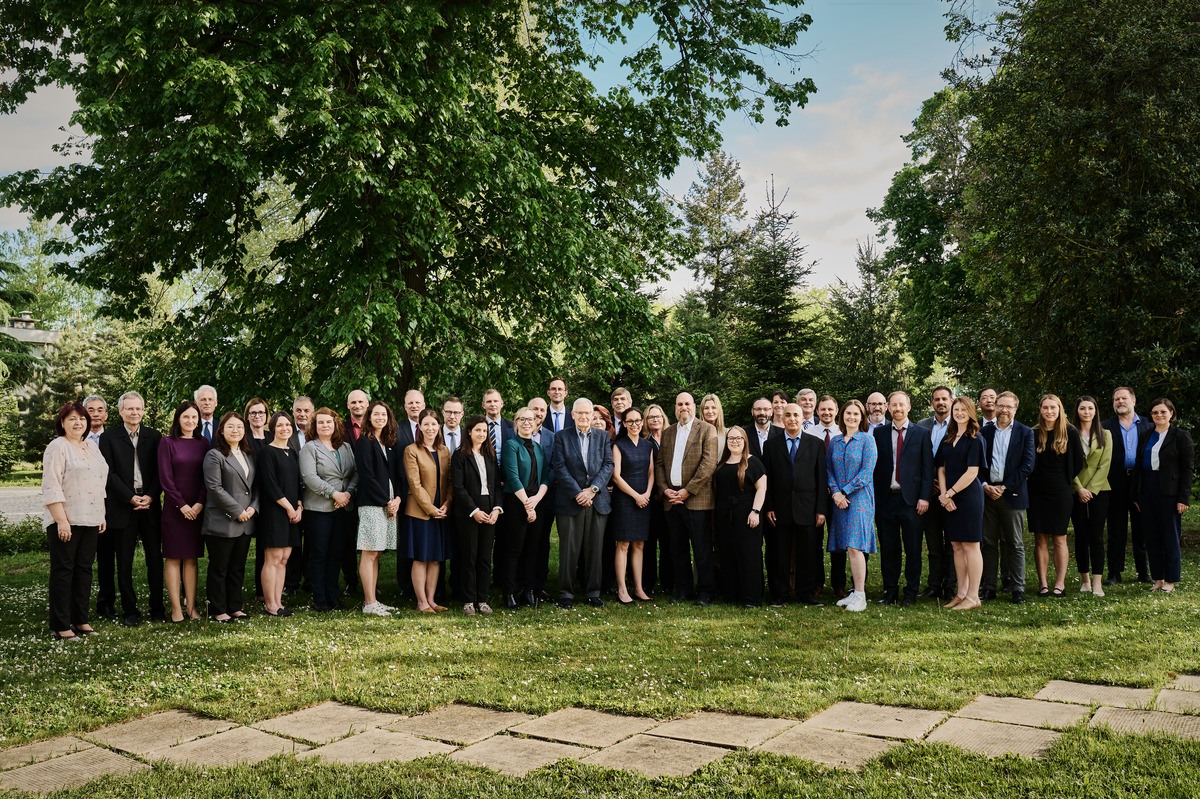As Delivered
Good Morning and thank you, Petr, for that introduction. Thank you to the Ministry of Foreign Affairs, the Institute for International Relations Prague and other partners for hosting this conference and for asking me to speak here again. Finally, thank you to the Czech Republic for your continued leadership on arms control and nonproliferation issues. When President Obama delivered his now-famous remarks here in April of 2009, it was no coincidence that Prague was the venue. Through the Velvet Revolution, now 25 years ago, the Czech people proved that the world could change. As the President said, the Czechs believed “that walls could come down; that peace could prevail.” The same spirit will be needed as we continue to face the dangers posed by weapons of mass destruction in this new century.
It was here in Prague that President Obama laid out his vision for the peace and security of a world free of nuclear weapons, not as a desirable, but unattainable dream, but as an achievable long-term goal. He laid out this vision because the United States cannot and will not accept a world that remains forever under the shadow of nuclear war or nuclear terror.
There should be no doubt: the U.S. commitment to achieving the peace and security of a world without nuclear weapons is unassailable. We continue to pursue nuclear disarmament and we will keep faith with our Nuclear Non-Proliferation Treaty (NPT) commitments, prominent among them, Article VI. Our responsible approach to disarmament has borne fruit in the form of major reductions in nuclear weapons, fissile material stocks and infrastructure. These efforts have led us to reduce our nuclear arsenal by approximately 85% from its Cold War heights. In real numbers, that means we have gone from 31,255 nuclear weapons in our active stockpile in 1967 to 4,804 in 2013. That is still too many and we know it.
As we consider future reductions, our focus must be on achievable and verifiable measures that all interested parties – nuclear states and non-nuclear states alike – can trust. Our past experience – both successes and disappointments – will inform how and when we proceed, with each step building on the last. I know that metaphors abound in regard to this process. At the United Nations General Assembly First Committee this past October, I posited that perhaps the oft-used stairway or ladder metaphor does not fit, since it implies a singular path of progress. The more I thought about it, the more I am convinced that we can only find success through multiple concurrent paths – large and small. Those paths can interconnect just like creeks and streams connect to form rivers. Over time, rivers cut through seemingly impenetrable stone on the way to their final destination. In those terms, one can see how the myriad of tasks in front of us will connect to each other and slowly, but surely form an irreversible path towards nuclear disarmament.
Here in Prague, it is appropriate to consider how far we have come down this metaphorical river and how much we have achieved in terms of reducing nuclear arsenals. Standing here in 1985, when the Cold War still divided this continent between democracy and dictatorship, it would have been impossible to imagine, much less predict, what was to come.
Within a decade, Washington and Moscow would conclude the Intermediate-Range Nuclear Forces Treaty (INF), the Strategic Arms Reduction Treaty (START), the Presidential Nuclear Initiatives, and the HEU Purchase Agreement.
These various bilateral and parallel unilateral initiatives led to array of impressive and long-reaching effects: banning an entire class of missiles carrying nuclear weapons, reducing the deployed nuclear stockpiles of the United States and Russia by over 11,000 warheads, drastically reducing and eliminating whole categories of tactical nuclear weapons, while removing others from routine deployment, and converting Russian nuclear material equivalent to an astounding 20,000 nuclear weapons into fuel for nuclear power. Today, light bulbs all across the United States are being lit by electricity produced from nuclear materials that could otherwise have fueled those 20,000 nuclear weapons.
Those efforts were followed by the Strategic Offensive Reductions Treaty (SORT), or Moscow Treaty, that further reduced U.S. and Russian deployed strategic forces. Most recently, President Obama and then-President Medvedev came here to Prague in 2010 to sign the New START Treaty. When it is fully implemented, New START will limit deployed strategic nuclear warheads to their lowest levels since the 1950s.
New START is enhancing security and strategic stability between the United States and Russia. Both nations are now faithfully implementing the Treaty’s inspection regime. Current tensions with the Russian Federation highlight the durability of the verification regime and the important confidence that is provided by data exchanges and on-site inspections under the Treaty, as well as the security and predictability provided by verifiable mutual limits on strategic weapons.
None of these achievements could have been predicted back in 1985, nor laid out in a long-term, time-bound program. On the contrary, it was the faithful implementation of each initiative that provided the trust and confidence, and the strategic opportunity to move ahead. It would have been wrong then to accept gimmicks and distractions in the place of the hard work and real progress toward disarmament. It would still be wrong to do so today.
Underpinning all of our efforts, stretching back decades, has been our clear understanding and recognition of the humanitarian consequences of the use of these weapons. That is the message the United States will take to the Conference on the Humanitarian Impact of Nuclear Weapons in Vienna next week. We are participating, not because our nuclear policy has changed – it has not. We are participating to reinforce the messages I have put forth here – that the practical path we have followed so successfully in the past remains the only realistic route to our shared goal of a nuclear weapons- free world. We cannot and will not support efforts to move to an amorphous nuclear weapons convention or the false hope of fixed timeline for the elimination of all nuclear weapons.
We must acknowledge that not every nation is ready or willing to pursue serious arms control and nonproliferation efforts. As we push those nations to accept their own global and ethical responsibilities, the United States will maintain a safe, secure, and effective nuclear arsenal for the defense of our nation and our allies. This is not a stance, as some have argued, that is mutually exclusive of U.S. disarmament goals. It simply recognizes the international security environment in which we find ourselves – and must take account of – as we pursue further progress. We are conscious of our current obligations and responsibilities and we are meeting them. As President Obama said here in Prague, the United States also has a responsibility to lead efforts toward disarmament, and I can affirm to you that we will never relent in this pursuit.
That said, we are under no illusions about the obstacles confronting us that slow the pace of progress on arms control and nonproliferation efforts. We are seeing new and enduring pressures on the nonproliferation regime – pressures that threaten global stability. We are seeing nations turn away from cooperation, turn away from the common good of nonproliferation efforts, and cling ever more tightly to their nuclear arsenals. Some see the landscape and say that we cannot control the spread of weapons of mass destruction or further reduce stockpiles. They are wrong. It was here in Prague that President Obama reminded us that, “such fatalism is a deadly adversary, for if we believe that the spread of nuclear weapons is inevitable, then in some way we are admitting to ourselves that the use of nuclear weapons is inevitable.”
Again, the United States cannot and will not accept this. “When we fail to pursue peace,” the President also said, “then it stays forever beyond our grasp…[t]o denounce or shrug off a call for cooperation is an easy, but also a cowardly thing to do.”
The United States will press ahead, even in the face of obstacles. While we have accomplished much over the past five years, our efforts are not static. We have no intention of diverting from our active efforts to reduce the role and numbers of nuclear weapons, increase confidence and transparency, strengthen nonproliferation, and address compliance challenges. We will do so pursing all available and practical avenues.
The United States has made clear that we are prepared to engage Russia on the full range of issues affecting strategic stability and that there are real and meaningful steps we should be taking that can contribute to a more predictable, safer security environment. Given that the United States and Russia continue to possess over 90% of the world’s nuclear weapons, this is the next logical move.
In June 2013 in Berlin, President Obama stated U.S. willingness to negotiate a reduction of up to one-third of our deployed strategic warheads from the level established in the New START Treaty. Progress requires a willing partner and a conducive strategic environment.
On the broader world stage, progress requires that states take greater responsibility to resolve the conflicts that give rise to proliferation dangers. It requires ending the nuclear build-up in Asia; that Iran join an agreement restoring full confidence in the peaceful nature of its nuclear program; and that North Korea return to compliance with its international obligations. And it requires that we make progress where we can. This includes in the Middle East where we will spare no effort to convene an historic conference on a zone free of all weapons of mass destruction and systems for their delivery.
Further, as the United States considers arms control and nonproliferation priorities, we will continue to consult closely with our allies and partners every step of the way. Our security and defense — and theirs — is non-negotiable.
No one here should doubt that we are in a difficult crisis period with the Russian Federation over Ukraine and Russia’s violation of the INF Treaty. Addressing both situations is an ongoing process. With specific regard to the Russian INF violation, we will continue engaging the Russian government to resolve U.S. concerns. Our objective is for Russia to return to verifiable compliance with its INF Treaty obligations, as the Treaty is in our mutual security interest and that of the globe. Indeed, we need cooperation with Russia and others to address new threats, first and foremost the threat of terrorists acquiring a nuclear weapon or nuclear material. They need this cooperation for their own security, as well.
Despite hopes to the contrary, there is no way to skip to the end and forgo the hard work of solving the truly daunting technical and political nonproliferation and disarmament challenges that lie ahead. It is not enough to have the political will to pursue this agenda; we have to have a practical way to pursue this agenda.
We can all acknowledge that verification will become increasingly complex at lower numbers of nuclear weapons, while requirements for accurately determining compliance will dramatically increase. Everyone who shares the goal of a world free of nuclear weapons should be devoting ample time and energy to address this challenge right now.
With that idea in mind, I am announcing today a new initiative: the International Partnership for Nuclear Disarmament Verification. The United States proposes to work with both nuclear weapon states and non-nuclear weapons states to better understand the technical problems of verifying nuclear disarmament, and to develop solutions. The United Kingdom and Norway have already pioneered this type of work. This new initiative will build on the spirit of that experiment to create a non-traditional partnership that draws on the expertise of talented individuals around the world, in both the public and private sectors. The Nuclear Threat Initiative will be a prime partner, providing intellectual energy and resources to the project. We are excited to work with them.
Beyond this effort, we will continue to work with the P5 on transparency and verification. The United States is pleased that the United Kingdom will host the sixth annual P5 conference early next year. The regular interaction, cooperation and trust-building happening now is the foundation on which future P5 multilateral negotiations on nuclear disarmament will stand.
Working with global partners, the United States has put a premium on efforts to reduce the threat of nuclear terror. Since President Obama spoke here in 2009, over 3 metric tons of vulnerable HEU and plutonium material have been removed or disposed of, and 11 countries have removed all HEU from their territory. The Nuclear Security Summit process has increased the security of nuclear material worldwide, reducing the chances that such material could fall into the hands of terrorists. We still need to strive for continuous improvement, because nuclear security is never “finished.” As long as nuclear and radioactive materials exist, they require our utmost commitment to their protection.
Along with our P5+1 partners, the United States will continue to seek concrete, verifiable steps to ensure that Iran’s nuclear program is exclusively peaceful.
We will support legally binding assurances against use or threat of use of nuclear weapons in the context of Nuclear Weapon Free Zone Treaty Protocols and push for the negotiation of a Fissile Material Cut-off Treaty (FMCT), as well as the ratification and subsequent entry into force of the Comprehensive Nuclear-Test-Ban Treaty (CTBT). All are keys to future success in disarmament.
I recently participated in an observer’s day for the 2014 Integrated Field Exercise hosted by Jordan and the Preparatory Commission for the CTBT. This exercise, which is still ongoing, was extraordinary to witness. Experts from 44 nations around the world are working together in an approximate 1,000 square kilometer area near the Dead Sea. These experts are employing the latest in nuclear explosion detection technologies like noble gas, seismic, multispectral imaging, and many others to test the techniques, equipment, and operational procedures needed to conduct an on-site inspection under the Treaty’s verification regime. The exercise is a testament to what we can achieve through cooperation and creativity.
As I have outlined, the United States has plans and we intend to see them through. At the core of our efforts is, again, our deep understanding of the human impacts of nuclear weapons. That is why I attended the Marshall Islands Remembrance Ceremony commemorating the 60th anniversary of the Castle Bravo test. That is why I went to Hiroshima to see the Cenotaph and the Peace Museum and speak with an atomic survivor. That is why I have visited Utah – twice in the past year – to speak with families affected by the downwind effect of nuclear explosive testing in the United States. Nuclear weapons are not a theoretical tool – they are real and their use would exact a terrible toll. None of us should ever forget that.
That is why we all can and must continue to seek the peace and security of a world without nuclear weapons.
Thank you.





